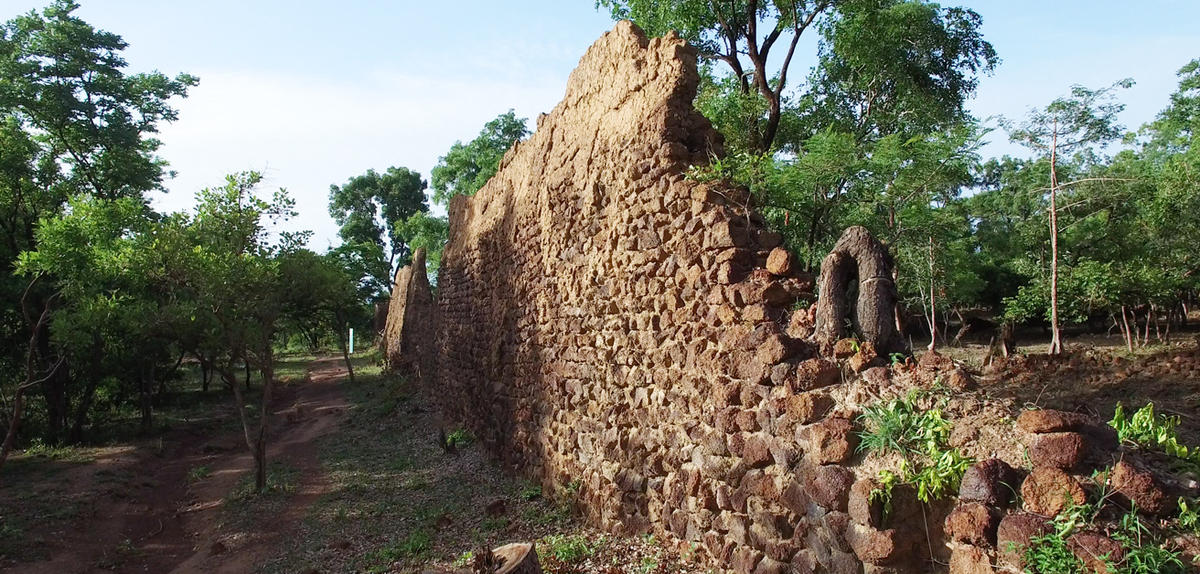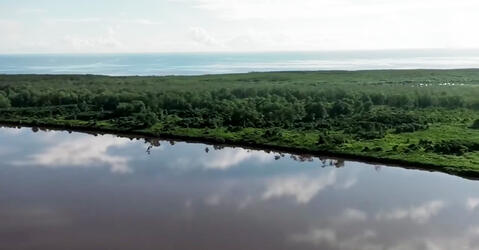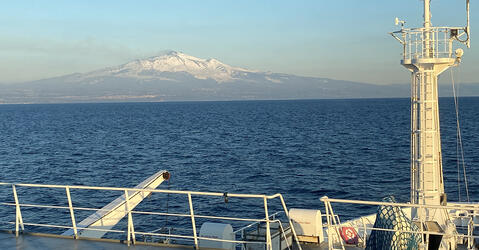The Forgotten City of Loropeni
Translation by Jay Swanson – 2/15/18
Day breaks over the ruins of Loropeni. We’re in the heart of Lobi, a region in the southwest of Burkina Faso among one of the country’s great mysteries: fortified walls reaching over 6m high and stretching for a hundred. It’s a rare clue to a civilization that disappeared centuries ago.
Lassina Simpore – Archeologist, Teacher/Researcher
As of today, we don’t know who constructed the ruins of Loropeni, why they were made, nor when they were built. It’s for these reasons that we affectionately call this site the mysterious ruins of Lobi…
Today, strange humming disturbs the tranquility of the site. A small drone takes photos of the fortified walls. Fabrice Monna is a specialist in photogrammetry. The technique enables the creation of three dimensional models using only photographs. This researcher is a member of a multidisciplinary international team that is working to understand the history of the ruins at Loropeni.
Fabrice Monna
One really important thing that we noticed on the fortifications is that there’s no visible point of entry. The obvious question then is how did they get in and out? There are some hypotheses, and eventually we’ll figure it out, but it’s an unanswered problem.
Thanks to a digital model created using these photographs, researchers can study the consistency of the wall’s construction. Any irregularities, like subtle changes in the size of the blocks, serve as an indicator that the given zone was reconstructed in a different era. Thus we can retrace the evolution of the edifice.
Fabrice Monna
There, for example, in all likelihood, something happened. We can see very clearly, by the shape of these ridges, that they were made in a very particular manner. The same thing is found here as well, and we will see significantly different modules that make up these zones. We hope that 3D models will provide statistical evidence for these differences, and eventually reveal things that can’t be seen by the naked eye.
In 2009, the site was classified as the country’s first UNESCO World Heritage Site. Discovered in 1902, the walls of Loropeni were the only fortifications still standing among over a hundred similar structures that existed in the region. It was in 2015 that a collaboration was launched between researchers from France, Burkina Faso, and even the Ivory Coast. Students from the Universities of Ouagadougou and Koudougou were also recruited to comb the site in an attempt to understand the civilization that flourished, dominated this region, and disappeared without leaving a sliver of a written trace.
ITV Rodrigue Guillon
This kind of construction required a strong workforce and centralized power to corral the workers. The first question is to know if the wall was defensive or for show – is this a display of power? There again we don’t really have an answer. Without knowing anything about the people that built this wall, we can’t know their intentions.
Two hypotheses are emerging to explain this apparent wealth: one, an activity tied to buying and selling gold, or the other, participation in the slave trade…
Whether it was a temporary shelter, or provided a permanent place to live, is another gap for the archaeologists to fill. Their first big surprise: the dig revealed a concentration of walls that marked out various rooms of buildings, some on top of each other, while some had been combined. Carbon dating revealed it was occupied in the 15th century.
At the same time we see an abundance of ceramics that look like they were used to store water…
Simeon Kouassi
We haven’t yet found many wells in this area, and even fewer within the fortifications. So I said to myself, ‘they must have had to carry water a long way.’ They had to have had some pretty sizeable containers to conserve water over maybe two, three, or four days. It’s a hypothesis that we can retain for now and we will see how it pans out as we study these ceramics.
On top of tangible, concrete facts exhumed from the ground, one section of the program is studying the mythology rooted in this site. Quentin Megret, an anthropologist, searched for traces of this vanished civilization in the oral stories passed down from generation to generation.
Quentin Megret – Anthropologist
We were hoping to get a clearer idea of who the builders were by talking to the people here. We were looking for recurrences within their stories that would give us clues...That didn’t end up being the case at all.
If the legends didn’t reveal the builders’ true identity, at the very least they would illustrate the wealth of stories tied to this site.
Hervé
Some say that those who built these structures were giants, five or six meters tall. And that to speak to them one had to take a stick and tap their ankle, or their shin to get them to bend down. There are plenty of myths like this.
Archeology is usually suspicious of oral traditions. But when we have cultural relics surrounded by lots of mythology, it tells us that the relics were appropriated by the local population. And for any tourist who comes here, beyond the wealth of the tangible results of our research, there is always a story to seek. Sometimes visitors want to take a moment and enter one of these myths, maybe to daydream a little…
The international research program is planned though 2018 with archaeological digs, geological surveys, and the analysis of digital models. The study of these mysterious ruins of Loropeni has only just begun.





